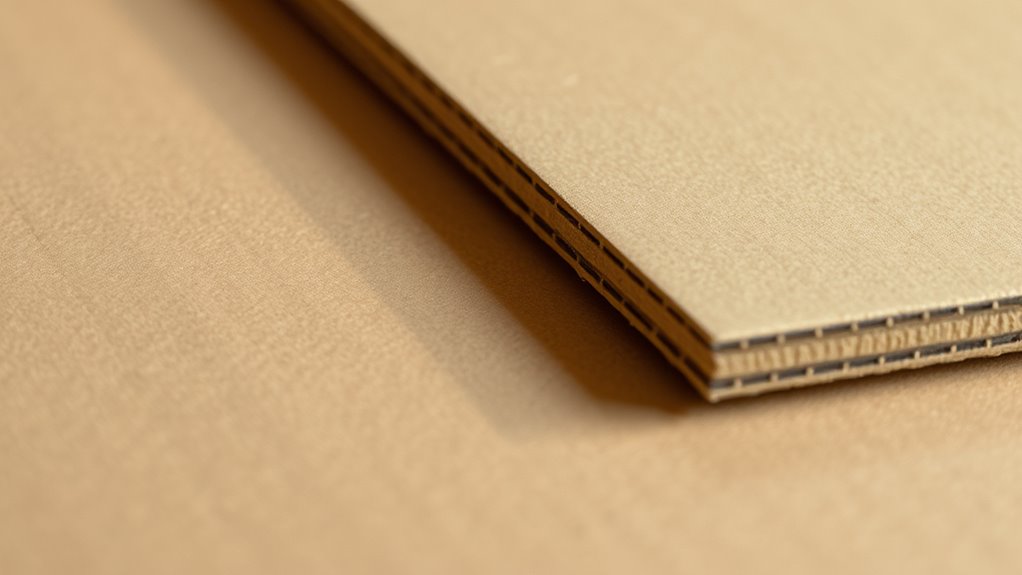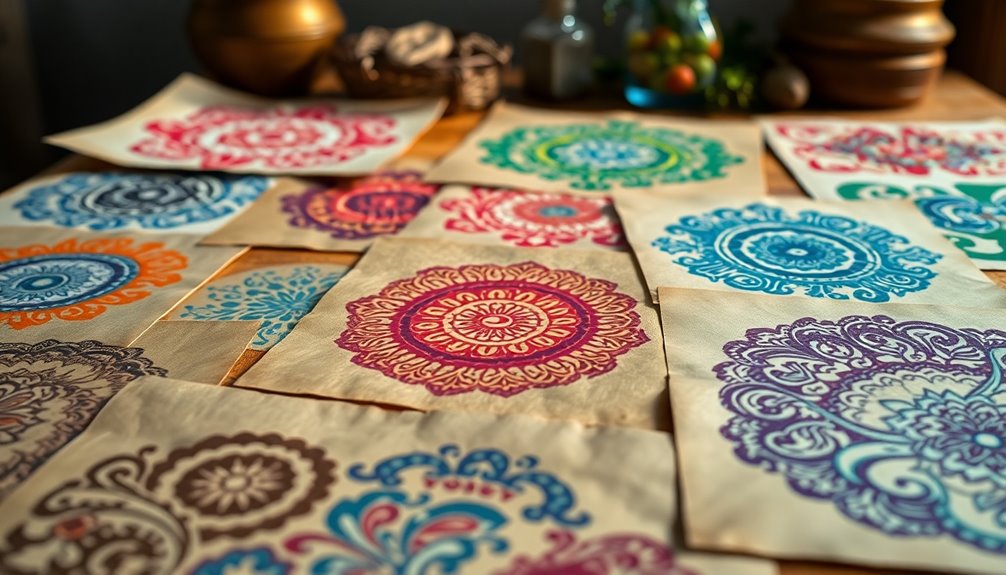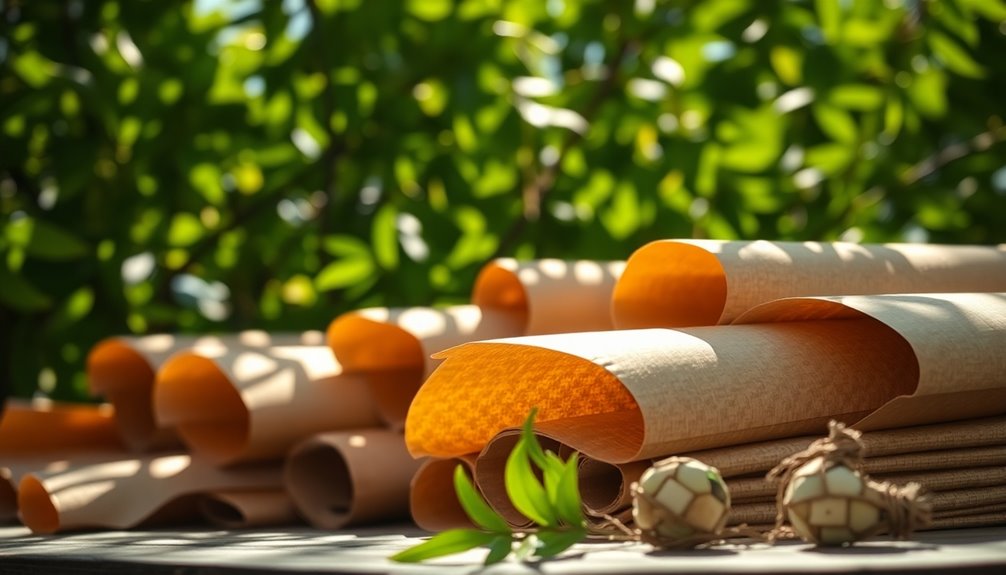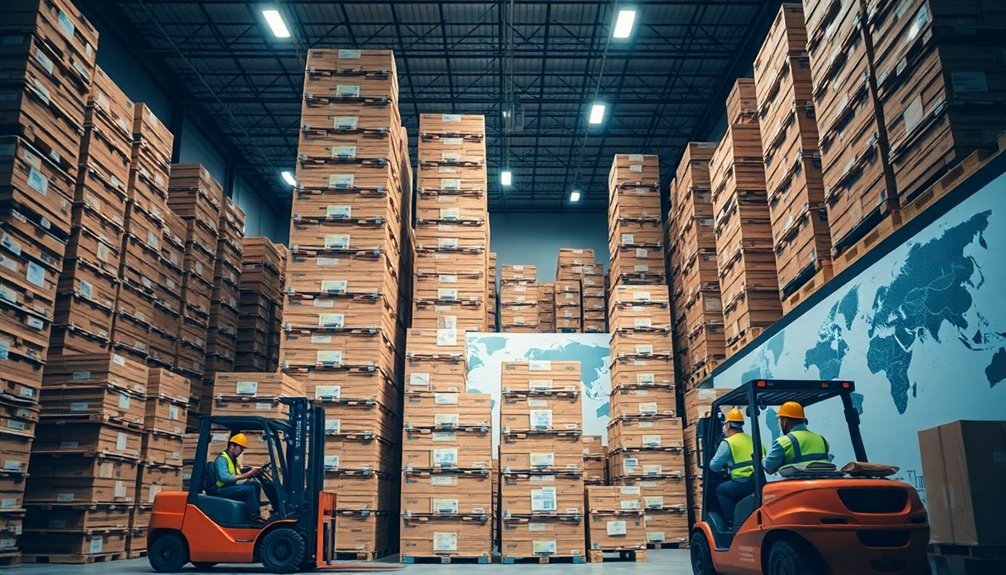Switching to lightweight alternatives like foam boards, molded pulp, or advanced composites can help you cut transportation costs, improve handling, and boost sustainability. These materials are easier to manage, reduce the need for heavy machinery, and lower shipping expenses. Plus, they often provide the same durability and protection as heavier options. If you want to discover which solutions suit your needs best, there’s more to explore that could transform your packaging approach.
Key Takeaways
- Lightweight materials like foam boards, molded pulp, and advanced composites reduce shipping weight and transportation costs.
- These alternatives facilitate easier handling, faster packing, and lower labor expenses.
- Eco-friendly options support recycling efforts by minimizing contamination and simplifying waste processing.
- Using lighter packaging enhances supply chain efficiency and reduces environmental impact.
- Innovative designs maintain product protection and durability without adding extra weight.

Traditional corrugated materials have long been the go-to choice for packaging and structural applications, but their weight can pose challenges for transportation and handling. Heavier materials increase shipping costs, require stronger machinery, and can slow down logistics operations. As you look for ways to optimize your packaging, you might consider lightweight alternatives that can reduce these issues while maintaining strength and durability. One major hurdle with traditional corrugated is recycling challenges. Corrugated cardboard is recyclable, but the process isn’t always straightforward. Contamination from adhesives, inks, or other materials can complicate recycling efforts, leading to increased waste and environmental impact. Furthermore, some recycling centers may reject contaminated or non-standard corrugated, making it less sustainable than you’d hope. This can add to your costs, both financially and in regards to environmental responsibility, pushing you to seek more eco-friendly options.
Traditional corrugated packaging faces recycling challenges due to contamination and non-standard materials.
When weighing the cost comparison, traditional corrugated often seems economical upfront due to its widespread availability and low material costs. However, the expenses accumulate when you factor in transportation, handling, and waste disposal. Heavier materials mean higher shipping fees, more fuel consumption, and increased labor for loading and unloading. Over time, these costs can surpass those of lighter alternatives. Lightweight materials, such as foam boards, molded pulp, or advanced paper-based composites, may have higher initial costs but can lead to significant savings in logistics. They also reduce the need for heavy-duty machinery and lower the risk of damage during transit, further decreasing overall expenses. Additionally, personality traits such as adaptability and innovation are vital when considering new packaging solutions.
Switching to lightweight alternatives also offers operational benefits. Handling becomes easier and faster, minimizing labor costs and reducing worker fatigue. You may find that packaging efficiency improves as well, with materials that are easier to cut, fold, or assemble. Additionally, lightweight options often come with innovative designs that can enhance product protection without adding extra weight. This allows you to deliver the same level of durability while cutting down on transportation costs and environmental impact. Even if the initial investment is slightly higher, the long-term savings and sustainability benefits make these alternatives worth considering.
Ultimately, embracing lightweight packaging solutions can help you navigate recycling challenges more effectively, reduce costs, and improve your supply chain’s sustainability. It’s about making smarter choices that align with your operational goals and environmental responsibilities, all while maintaining the strength and reliability your products need.
Frequently Asked Questions
What Environmental Benefits Do Lightweight Alternatives Offer?
Choosing lightweight alternatives helps reduce your environmental impact by lowering your carbon footprint and enhancing recyclability benefits. These materials often require less energy to produce and transport, which cuts greenhouse gas emissions. Plus, their improved recyclability means you can more easily repurpose or recycle them, leading to less waste in landfills. By opting for lightweight options, you actively contribute to sustainability efforts while maintaining effective packaging solutions.
How Do Cost Savings Compare to Traditional Corrugated Options?
Cost comparisons clearly crown lightweight alternatives as cost-efficient choices. You’ll notice manufacturing savings because lighter materials reduce shipping expenses and require less energy during production. These savings directly translate to lower overall costs, making lightweight options more attractive financially. By choosing lightweight alternatives, you optimize your budget while maintaining durability and performance, positioning yourself advantageously in market competition. Overall, lightweight options provide substantial savings, proving they’re a smart, sustainable, and savvy choice for your packaging needs.
Are Lightweight Materials Suitable for Heavy-Duty Packaging?
Lightweight materials aren’t ideal for heavy-duty packaging because durability concerns can arise, affecting their load capacity. You might find them suitable for lighter items, but for heavy or bulky goods, traditional corrugated offers better strength and stability. If you need to guarantee your packaging can handle substantial weight, it’s safer to choose options specifically designed for high load capacity, even if they’re a bit heavier.
What Are the Best Applications for Lightweight Corrugated Substitutes?
Your best applications for lightweight corrugated substitutes are in retail packaging, display units, and protective padding, where you seek to balance durability concerns with aesthetic options. These materials can handle everyday handling without faltering, almost like a superhero in disguise. They provide a sleek appearance, reducing weight without sacrificing strength. Perfect for shipping fragile items or creating eye-catching retail displays, they keep your packaging both functional and visually appealing.
How Long Is the Lifespan of These Alternative Materials?
The lifespan of lightweight alternatives varies, but you can typically expect 5 to 15 years depending on durability concerns and maintenance requirements. If you choose materials like fiberboard or plastic, they might need more frequent upkeep to prevent damage from moisture or impact. Proper installation and regular inspections help extend their life, ensuring they remain functional and cost-effective for your needs over time.
Conclusion
Switching to lightweight alternatives doesn’t mean sacrificing strength or durability. These options often cost less, are easier to handle, and reduce transportation emissions. If you’re worried about their performance, rest assured many are designed to meet or exceed traditional corrugated standards. Embrace these innovative solutions—you’ll save money, cut waste, and still get reliable protection for your products. Don’t let the misconception of fragility hold you back from making smarter, more sustainable choices today.










